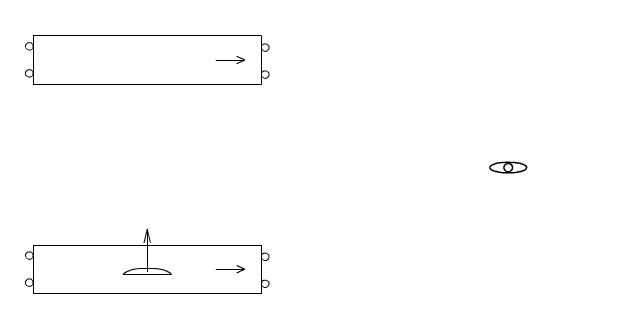To observe
When Albert Einstein wrote the book ‘Theory of relativity, the special relativity and general relativity’, he used examples to clarify the problems he faced.
On the first pages of the book there is an example of a stone dropping from a train carriage onto an embankment. The stone drops in a straight line related to the train carriage, but from the stand point of an observer standing nearby the embankment the trajectory of the stone seams to be parabolic.
The question he asks is; ‘In relativity what is the trajectory of the stone?’
The example he gives can be replaced by another.
There are two train carriages that move with equal very high velocities on two parallel embankments. On one of the train carriages there is an archer who practices on a shooting target on the side of the other train. Target and archer aren’t moving in relation to each other.
Suddenly the train carriages pass an observer who stands between the two embankments at the moment the archer shoot his arrow. The observer got hit, not by the arrow head but sideways. It is as if he is hit by a stick.
Is the arrow moving sideways or in the direction the archer aimed at?

We know that the archer knows when he shoot the arrow and in which direction. The observer wasn’t able to see the archer and therefor couldn’t tell when the arrow was shoot. He had no influence on the event. The archer on the other hand did cause the event. He shot the arrow and determined the velocity.
The observer got hit by the coincident that he was at the wrong place at the wrong time.
Both archer and observer had physical contact with the arrow. However the start point or origin of the arrow and the force in which it was shot lies with the archer who also determined the direction. Even the observer knows that the arrow couldn’t be shot sideways.
An observer can observe by sound, touch or by vision. Most times an observer observes by vision. At observing in space he only can use his eyes. He gets hit by light waves that enter his eyes. To observe the observer has to get hit. He is passive in the process.
Observations made in space can only be made when a surface is subjected to electromagnetic waves. That surface has to react when it is hit. Observations can’t influence the start point or origin of the electromagnetic waves, nor the speed related to that origin.
The way the observer in the example in the book sees the trajectory of the stone is irrelevant. The observer can’t stop the event by blinding his eyes. Notting will change. The movement of the stone can only be related to the movement of the train carriage and the moment it started dropping in the direction of the embankment.
